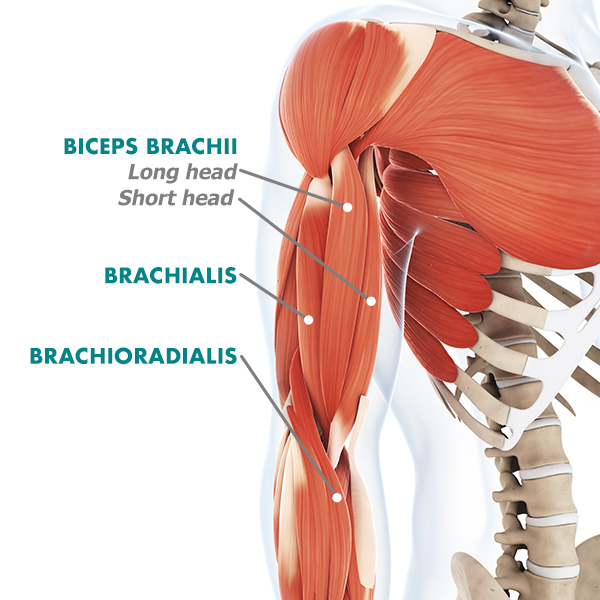To the beginner, strength training may seem simple: lift weights, get strong. But as you delve deeper into the world of fitness, you'll discover a whole new language of weightlifting terms and jargon. From compound movements to eccentric contractions, it can be overwhelming. That's why we've compiled a comprehensive list of weightlifting terms to help you navigate this competitive digital world of fitness.
FORM/MOVEMENT
Ass to grass
A squat variation where you fully flex your knees and hips, bringing your glutes as close to the floor as possible.
Compound movement
An exercise that involves multiple major joints, such as squats, lunges, deadlifts, pull-ups, and presses.
Concentric movement
A muscle contraction where the muscle shortens, such as the upward movement in an overhead press.
Eccentric movement
A muscle contraction where the muscle lengthens, such as the downward movement in an overhead press.

Flexion
A movement where a joint bends, such as a biceps curl or sit-up.
Extension
A movement where a joint straightens, such as a triceps extension or deadlift.
Functional movement
An exercise that mimics daily activities, like carrying groceries or lifting luggage into an overhead bin.
Grip strength
The ability to grasp and hold objects using your fingers and hands, which is important for exercises like farmer's carries and pull-ups.
Hip hinge
A movement where the hips bend while the spine remains rigid, like a Romanian deadlift or standing row setup.

Isolation movements
Exercises that target a single joint, like lateral raises, triceps extensions, and biceps curls.
Isometric exercise
An exercise that involves muscle tension without joint movement, like a wall sit or plank.
Lengthening
The act of extending or relaxing a muscle, like the hamstring muscles lengthening during a forward bend stretch.
Shortening
The act of contracting or tensing a muscle, like the biceps muscles shortening during a curl exercise.
Lifting to failure
Performing an exercise until you can't complete another repetition.

Supination
The act of turning your hand or foot upward or outward, like supinating your hand during a dumbbell curl.
Pronation
The act of turning your hand or foot downward or inward, like pronating your hand during an exercise performed on your stomach.
Time under tension (TUT)
The total time taken to complete a strength-training exercise, often expressed as a four-digit number representing different portions of the movement.
WORKOUT DESIGN
Active recovery
Light, easy movement performed on non-exercise days or between training sessions to enhance recovery.
Bulking
A training block focused on building muscle mass through heavy compound exercises, extra protein and calories, and rest.

Calisthenics
Repetitive bodyweight exercises like push-ups, squats, jumping jacks, and sit-ups.
Cutting
A training block focused on losing fat through reduced calories, continued strength training, and additional low-intensity exercise.
Deloading
A period of reduced volume and intensity in a strength-training program, usually following a period of high-intensity training.
Density training
A training style focused on completing as many reps, sets, and/or exercises as possible in a given time period.
Drop set
A set performed after one or more heavy sets where you drastically reduce the weight to further exhaust a muscle.

Dynamic stretching/warmup
Light warmup moves using only bodyweight to increase core temperature, loosen joints, and reduce injury.
Full-body training
A training block or program that works all major muscles in each workout.
Muscular endurance
The ability of a muscle to contract repeatedly under tension before fatiguing.
One-rep max
The maximum weight you can lift for a single repetition in a given exercise.
Overtraining
Working out at a level from which you are unable to recover, resulting in symptoms like increased resting heart rate and lack of progress.

Periodization
An approach to training that focuses on different goals in training blocks throughout the year.
Power
The ability to exert force quickly, often measured in activities like sprinting or jumping.
Plyometrics
Explosive exercises like jumps and throws designed to develop power and enhance strength.
PR (Personal record)
An individual's best performance in a lift or exercise.
Progressive overload
The systematic increase of reps, weight, and/or volume in a strength training program to improve fitness components.

Pyramiding
A strategy where weight increases incrementally over several sets, often culminating in an all-out set of five or fewer reps.
Reps
A single cycle of a strength-training movement, including lowering, lifting, and/or holding.
Sets
A group of reps performed in succession to increase fitness aspects.
Split training
A program that focuses on different muscle groups or movements on different days or within a cycle of workouts.
Strength
The ability to exert force to overcome resistance, often measured in activities like lifting weights.

Super setting
Alternating sets of exercises back to back to save time or increase workload on a muscle group.
Undulating periodization
A variation of periodization where the focus of workouts varies within the same training block to reduce stress and create adaptation.
Volume
The total amount of work performed in a given workout, week, or training block.
METABOLISM/ENERGY/NUTRITION
Amino acids
The building blocks of dietary protein, used for muscle and tissue building.
Anaerobic vs. aerobic
Endurance activities are often referred to as aerobic, while strength and power activities are called anaerobic.

ATP (Adenosine triphosphate)
The primary fuel that powers biological activity in the body.
Broscience
Scientifically unproven training and nutritional advice often spread by individuals without legitimate credentials.
EPOC (Excess post-exercise oxygen consumption)
The continued burning of energy above your baseline metabolic rate after a workout.
Hypertrophy
Muscle growth.
Lactate
A fuel source produced and burned during high-intensity training.

RPE (Rate of perceived exertion)
A subjective scale used to measure how hard a person is working relative to their maximal capacity.
ANATOMY
Biceps
The muscles on the fronts of the upper arm responsible for bending the elbow.
Glutes (gluteals)
The muscles on the backs of the hip joints responsible for extending the hips.
Lats (latissimus dorsi)
The muscles on the sides of the torso responsible for drawing the arms back and down.
Pecs (pectorals)
The chest muscles responsible for drawing the upper arms towards the center line.

Quads (quadriceps)
The muscles on the fronts of the thighs responsible for extending the knees.
Traps (trapezius)
The kite-shaped muscle on the upper back responsible for drawing the shoulder blades upwards, backwards, and downwards.
Triceps
The muscles on the backs of the upper arms responsible for extending the elbows.
Abduction
The act of moving an arm or leg away from the center line of the body.
Adduction
The act of moving an arm or leg towards the center line of the body.
Anabolism
Metabolic activities that involve growth, like muscle growth.
Atrophy
Muscle loss or breakdown.
Body composition
The proportion of body fat in relation to overall body mass.
Muscle fiber type
Categorization of muscle fibers based on their characteristics and function.
Recomposition
Changing the proportion of body fat and muscle tissue without significant change in total body mass.
Catabolism
Metabolic activities that involve breakdown, like fat loss.
DOMS (Delayed onset muscle soreness)
Soreness in muscles felt hours or days after a hard exercise session.
Fast twitch
A type of muscle fiber responsible for fast, high-effort movements like sprints and heavy lifts.
Midline
An imaginary center line that divides the body vertically.
Mind-muscle connection
The mental awareness of muscle actions during exercise, shown to improve the effectiveness of strength training.
Muscle imbalance
A difference in strength between muscles on different sides of the body or joints.
Range of motion
The direction and extent to which a joint can move in a particular exercise or stretch.
Sarcopenia
Loss of muscle mass due to disease, aging, or disuse.
Did you miss our previous article...
https://naturesmart.us/fitness/tea-vs-coffee-which-drink-is-better-for-you
 HealthWellnessFitnessBeautyVideosPrivacy PolicyTerms And Conditions
HealthWellnessFitnessBeautyVideosPrivacy PolicyTerms And Conditions
